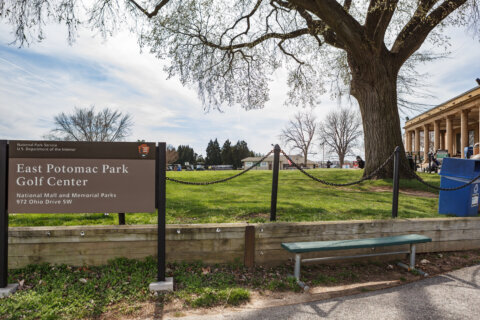The U.S. Capitol complex was put on elevated alert when a plane strayed into D.C. airspace and jets were scrambled on Sunday, the latest incident in recent years that put security protocols to the test.
Soon after the Cessna made its way through the D.C. region, U.S. Capitol Police announced that they were “working closely with our federal partners to monitor an unresponsive pilot.”
Alarms could be heard going off inside the Capitol at the time the incident was developing on Sunday afternoon. Congress was not in session, no evacuation was ordered and Capitol Police noted that the elevated alert was brief.
Capitol Police and federal officials have been constantly updating security and communications guidelines in connection with incidents related to D.C. airspace over the years.
Last year, the Capitol was evacuated after a small plane was spotted circling nearby. It turned out that it was involved in a planned U.S. Army Golden Knights parachute jump over Nationals Park. The plane had taken off from Joint Base Andrews, but there was a communication failure involving the Federal Aviation Administration, which didn’t notify Capitol Police about the event.
At the time, then-House Speaker Nancy Pelosi called the incident “outrageous and inexcusable.”
It occurred just over a year after the Jan. 6 attack on the Capitol, which left many lawmakers and Congressional staff members on edge.
In 2015, a bizarre incident involving a protester flying a gyrocopter also led to a review of security protocols. A Florida man flew the gyrocopter down the National Mall in the middle of the day and landed on the Capitol’s west lawn.
The man, Doug Hughes, said he wanted to deliver letters to Congress to reform campaign finance laws. He was quickly arrested after he landed.
The previous year, the Capitol and the Library of Congress were briefly evacuated after a small plane went into D.C. airspace and initially didn’t respond to communications.
In 2004, Congress was in session and a major evacuation of the Capitol complex took place, in what was one of the most serious security breaches of D.C. airspace. It turned out a pilot flying Kentucky’s governor to D.C. for Ronald Reagan’s funeral strayed into D.C.’s no-fly zone.
At one point, U.S. military officials weighed whether to shoot down the plane, because it had gone so far into the prohibited zone. That led to a reassessment of safeguards related to protecting D.C. airspace.
Security protocols involving aircraft changed greatly after the Sept. 11 terror attacks, which included a commercial jetliner flying into the Pentagon.
Airspace around D.C. is more restricted than in any other part of the country, according to the FAA.








